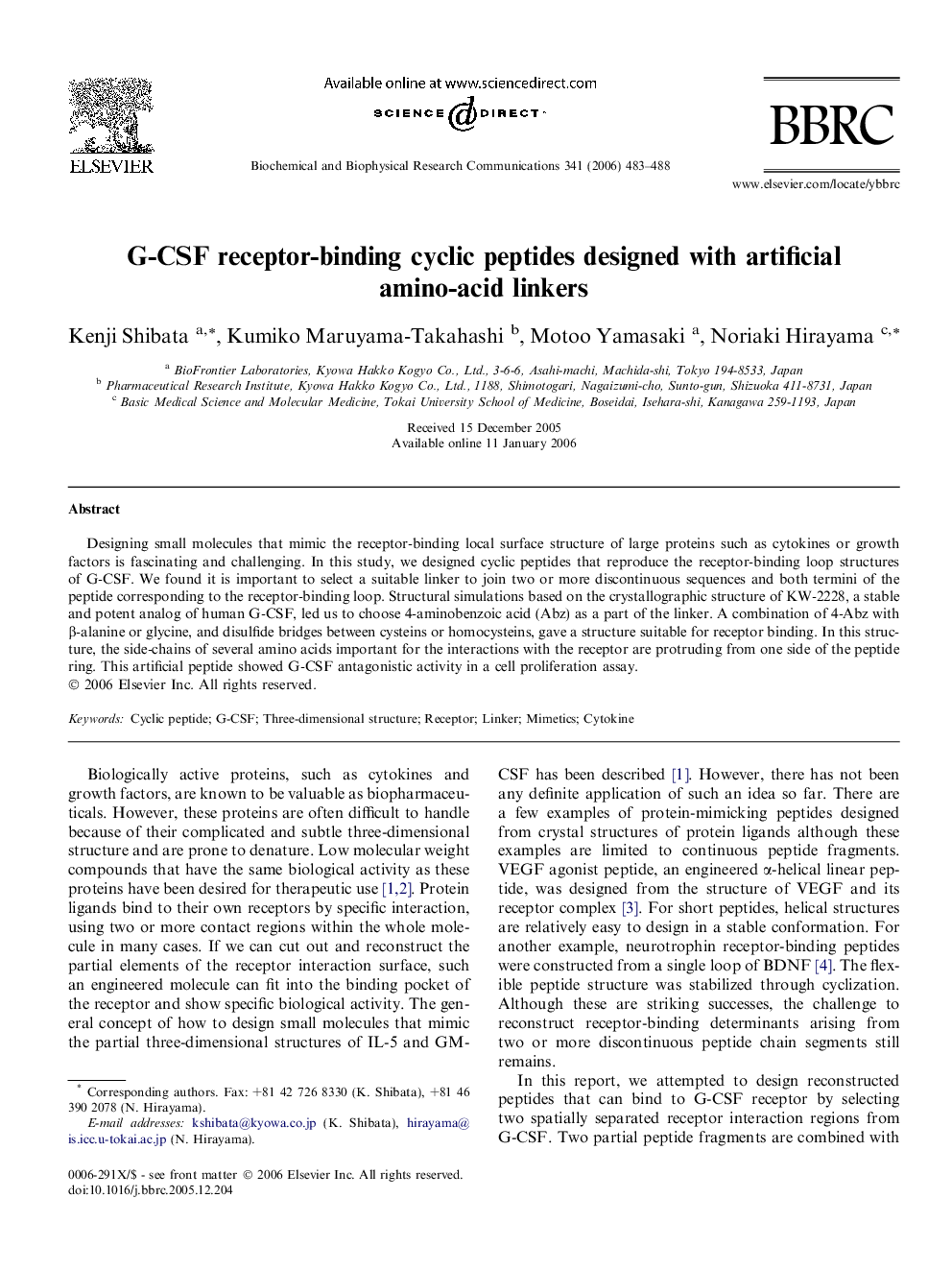| Article ID | Journal | Published Year | Pages | File Type |
|---|---|---|---|---|
| 1940413 | Biochemical and Biophysical Research Communications | 2006 | 6 Pages |
Designing small molecules that mimic the receptor-binding local surface structure of large proteins such as cytokines or growth factors is fascinating and challenging. In this study, we designed cyclic peptides that reproduce the receptor-binding loop structures of G-CSF. We found it is important to select a suitable linker to join two or more discontinuous sequences and both termini of the peptide corresponding to the receptor-binding loop. Structural simulations based on the crystallographic structure of KW-2228, a stable and potent analog of human G-CSF, led us to choose 4-aminobenzoic acid (Abz) as a part of the linker. A combination of 4-Abz with β-alanine or glycine, and disulfide bridges between cysteins or homocysteins, gave a structure suitable for receptor binding. In this structure, the side-chains of several amino acids important for the interactions with the receptor are protruding from one side of the peptide ring. This artificial peptide showed G-CSF antagonistic activity in a cell proliferation assay.
